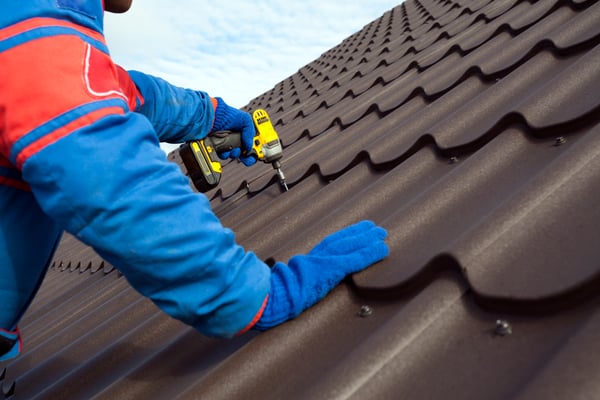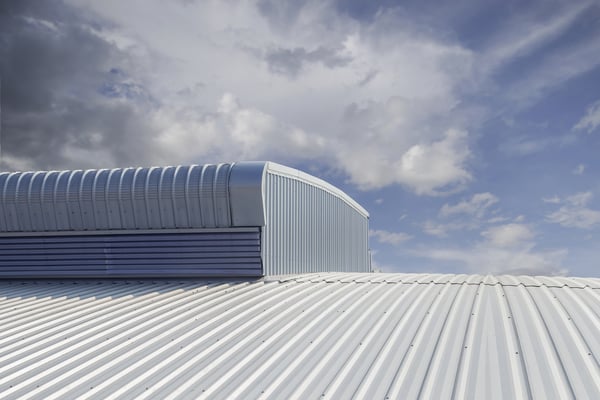Factors that Affect Roof Performance

There are many types of roof materials and structures, each with advantages and disadvantages. However there are common factors that affect the performance of commercial and residential roofs, regardless of the system installed. Since roof structures protect the interior of your building, having a reliable system is crucial to promote longevity. This article provides an overview of some factors that can affect your roof performance.
In New York City, new roof installations and expansions are subject to Local Laws 92 and 94. There are exceptions, but in general these laws require the installation of a green roof or solar panels on all new roofs and expansions.
Make sure your new roof meets Local Laws 92 and 94.
Design of the Roof System
The roof design is a key factor that affects the overall performance of a building. There are cases, especially in residential projects, where the roof design gets reduced priority in an attempt to simplify the project and reduce costs. Consider that the roof protects everything inside a building, and it can also be used to install mechanical equipment and solar panels. Having a reliable roof is critical, even if lower-cost options are available.
Before submitting the design for approval, an important step is selecting an adequate roofing system. There are 6 main roofing options available: EPDM, PVC, built-up (BUR), TPO, KEE or modified bitumen. Each system has its own characteristics, advantages, disadvantages and recommended applications to consider when making your decision. It is always advisable to get a quote from companies such as Instant Roofer before proceeding with the actual work.
Choosing a Qualified Contractor

A high-quality roof design requires a professional installation that meets its specifications; hiring a qualified contractor is another key factor that affects performance. An incorrect installation of your roofing system will shorten its service life, and you can expect frequent maintenance issues such as water leakage. Always ask for contractor credentials and past experience, to ensure they are qualified for the task at hand.
Warranty
Many warranties are created to protect the interest of roof manufacturers, offering limited coverage. Therefore, make sure you read the warranty document carefully, especially the limitations or exclusions that void the warranty. Determine to what extent you are covered, and estimate the repair cost in case of damage. Another aspect that can also nullify a warranty is improper maintenance.
Considering Foot Traffic on the Roof
The amount of time that people spend on roofs is often underestimated, and foot traffic on roofing systems is constantly overlooked. This is especially true in commercial and industrial buildings, where some equipment and components can only be accessed through the roof. When a roof is exposed to high traffic it can suffer puncturing, which greatly decreases its performance. To prevent this issue, consider elevated walkways to minimize direct foot traffic over the roof. Another preventive measure is only giving access to maintenance personnel.
Water Accumulation on Roofs
Water accumulation or ponding is a common problem that affects roofing systems. When left unattended, ponding can cause issues like leakage, mold growth and rotting. In extreme cases, ponding may even cause the roof to collapse.
Ponding is often caused by poor design, installation and maintenance. The water normally comes from precipitation, but condensation from mechanical equipment can also accumulate. Make sure your roof drainage system is kept in optimal condition. Ponding reduces the service life of your roof, and it can also nullify the warranty.
Temperature

Temperature can affect roof performance, due to the material expansion and contraction caused by temperature changes. When the temperature of a roof changes drastically, it may experience thermal shock or cracking. Reflective coatings are used to decrease the overall roof temperature and avoid sudden changes in temperature.
Blistering and Shrinkage
When liquid gets trapped between roof membrane layers, it can cause damage. The vapor expands with high temperature, pushing the membrane out into raised strips and causing blistering.
If the installation has not been adequate, shrinkage can also occur due to weather changes. Shrinkage may cause cracks and wrinkles, allowing water leakage and compromising the structural integrity of the roof. Both issues can be controlled with regular inspections and maintenance.
Roof Maintenance
Providing adequate maintenance for your roofing system is key: without maintenance, a minor issue can turn into a major problem over time. Maintenance should be routine and proactive, instead of waiting for a roof leak before inspecting it. Make sure you schedule routine inspections to detect issues when they are still small. Once the inspection is completed, fix any issues found with timely and proper repairs. Repairs should be conducted by a qualified contractor just like the initial installation, or additional issues may emerge.
Nearby EngineersNew York Engineers has a MEP design track record of 1,000+ projects. Contact us via email (info@ny-engineers.com) or phone (786) 788-0295212-575-5300, and make sure your building systems meet codes.

Anuj Srivastava
Anuj Srivastava is a principal partner at NY Engineers. He is known for his MEP franchise market knowledge. Anuj is currently leading a team of 100+ MEP/FP engineers and has successfully led over 1500 franchise projects in the US.
Join 15,000+ Fellow Architects and Contractors
Get expert engineering tips straight to your inbox. Subscribe to the NY Engineers Blog below.

